August 2, 2025 marks the 70th anniversary of the establishment of the Government Committee for Religious Affairs and the tradition of the State Management of Religion. Up to now, the whole country has a diverse and vibrant religious life with more than 95% of the population following a religion. 43 organizations belonging to 16 religions have been recognized and granted certificates of registration of operation with over 27.7 million followers.
Throughout history, people of all religions have always been united, closely connected, and actively contributed to building and protecting the Fatherland. Throughout its development journey, Vietnam has achieved remarkable achievements in ensuring freedom of belief and religion.
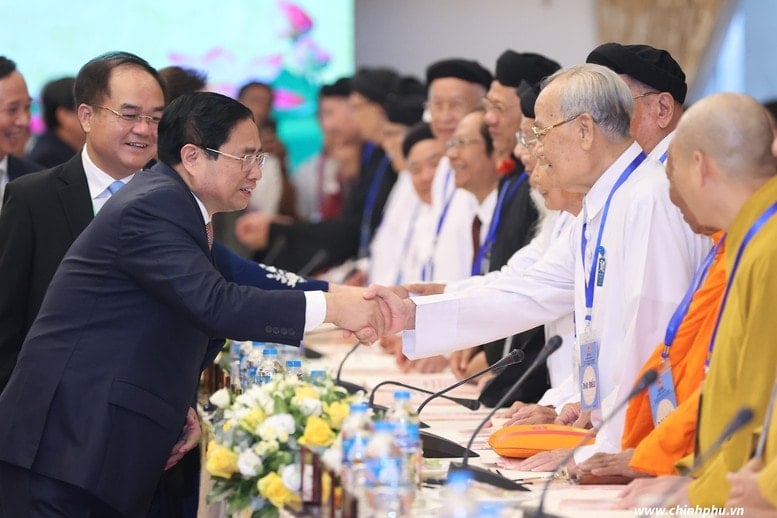
1945-1955
On September 3, 1945 , just one day after reading the Declaration of Independence at Ba Dinh Square, at the first meeting of the Provisional Government of the Democratic Republic of Vietnam, President Ho Chi Minh raised six urgent issues, including the sixth issue: “Colonialists and feudalists implemented a policy of dividing religious and non-religious compatriots to make it easier to dominate. I propose that our Government declare freedom of belief and unity between religious and non-religious people” . The 1946 Constitution recognized for the first time the right to freedom of belief of citizens.
Many bishops, priests, and lay people took on important responsibilities of the early people's government, such as Bishops Le Huu Tu and Ho Ngoc Can, who were Government advisors; Mr. Nguyen Manh Ha, who held the position of Minister of Economy; Mr. Vu Dinh Tung, Director of the Northern Health Department; Minister of War Invalids and Veterans in the Government; and especially Priest Pham Ba Truc, who was elected as Deputy Head of the Standing Committee of the 1st National Assembly.
(According to Characters - Events VNA)
Immediately after the founding of the country, many religious dignitaries were invited by President Ho Chi Minh to be advisors to the Government.
The success of the August Revolution continued to fan the flames of patriotism among people of all religions.
In 1945, a number of bishops sent letters to the Holy See and the World Catholic Community to support President Ho Chi Minh's Government. Responding to the "Golden Week" appeal, bishops and businessmen donated money and gold to help the revolution. When the French colonialists returned to invade, many other priests temporarily stopped their religious activities to go to the war zone to directly participate in the resistance...
Author Nguyen Van Thanh wrote in the Communist Magazine : "Many Catholic churches, Buddhist pagodas, Cao Dai temples... became places to hide cadres and soldiers; many dignitaries and parishioners sacrificed themselves for the survival of the nation."
During the resistance war against the French, many monks, nuns, and Buddhists participated in revolutionary activities, upholding the fearless spirit of Buddhism ; many monks "took off their cassocks and put on their armor" to join the army marching south; numerous monks and Buddhist followers participated in the movement to eradicate hunger and illiteracy, "the pagoda is the school, the monks are the teachers".
Among the Southern revolutionary cadres and soldiers who gathered in the North, there were a number of Southern resistance priests. The first National Catholic Conference took place from March 8 to 11, 1955 in Hanoi, gathering 191 official delegates and 150 lay observers. The conference established the Liaison Committee of Catholics who love the Fatherland and love peace.
According to the Vietnam Catholic Solidarity Committee
Also during this time, nearly 1 million Catholics from the North migrated to the South.
After 1954, the American colonialists and the Ngo Dinh Diem government suppressed the struggle of the people of the South, including religious dignitaries and followers.
The movement to fight for peace, democracy, and people's livelihood spread, attracting millions of people, including Buddhists, Cao Dai, Hoa Hao Buddhists, Catholics, and ethnic minorities...
On August 2, 1955 , the Prime Minister issued Decree No. 566-TTg establishing the Religious Committee , a unit within the Government Internal Affairs Committee and directly under the Prime Minister's Office - the predecessor of today's Government Religious Committee; at the same time, establishing a system of Religious Committees directly under the Regional Administrative Committees and Provincial Administrative Committees, which is also the predecessor of the State Management system of religion.
1955-1975
During the years of the country's resistance war against the US and the construction of socialism, the Religious Affairs Committee advised the Party and the State to develop and promulgate policies and documents related to religion and religious work; coordinated with central agencies to monitor, guide and urge localities to implement policies, and liaised with religious organizations. The Anti-Migration Campaign Committee was established, and a number of religious organizations in the North established church organizations such as: the General Assembly of the Evangelical Church of Vietnam (1955); the Committee for Solidarity of Vietnamese Catholics who love the Fatherland and peace; the Cao Dai Unification Campaign Committee; the Unified Buddhist Association of Vietnam (1958)...
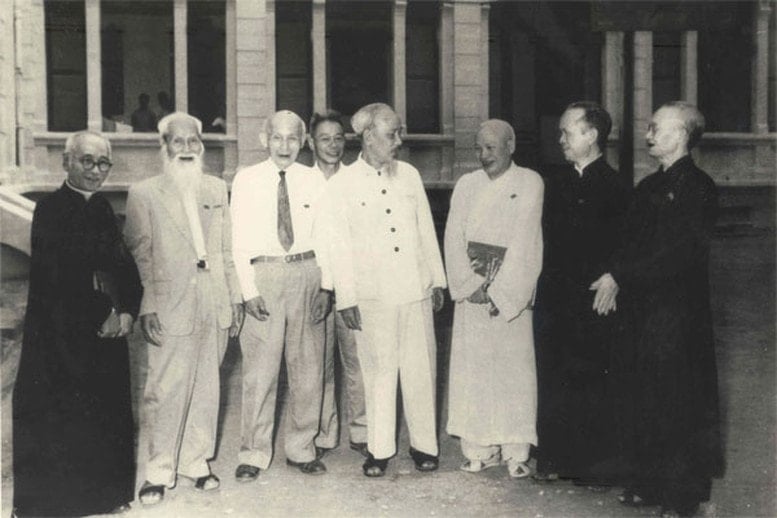
According to Dr. Bui Huu Duoc, former Director of the Department of Buddhism - Government Committee for Religious Affairs (before 2025), during the resistance war against the US, to save the country, with the spirit of "protecting the nation - bringing peace to the people", Southern Buddhism bravely took to the streets to fight against the oppression of the US-Diem regime; many pagodas became places for exchanging secret information; a place to open the door for young people to both study and practice patriotic Buddhism, and avoid being drafted into the army. Many monks, nuns, and Buddhists "committed themselves" to the revolution, becoming soldiers, liaison officers, and cadres for enemy soldiers...
In particular, the example of Venerable Thich Quang Duc who burned himself to death to protest the suppression of Buddhism, to protest the war, to demand religious freedom and national independence, shook the South, creating a worldwide wave of protest against the invading American imperialists and supporting the Vietnamese cause.
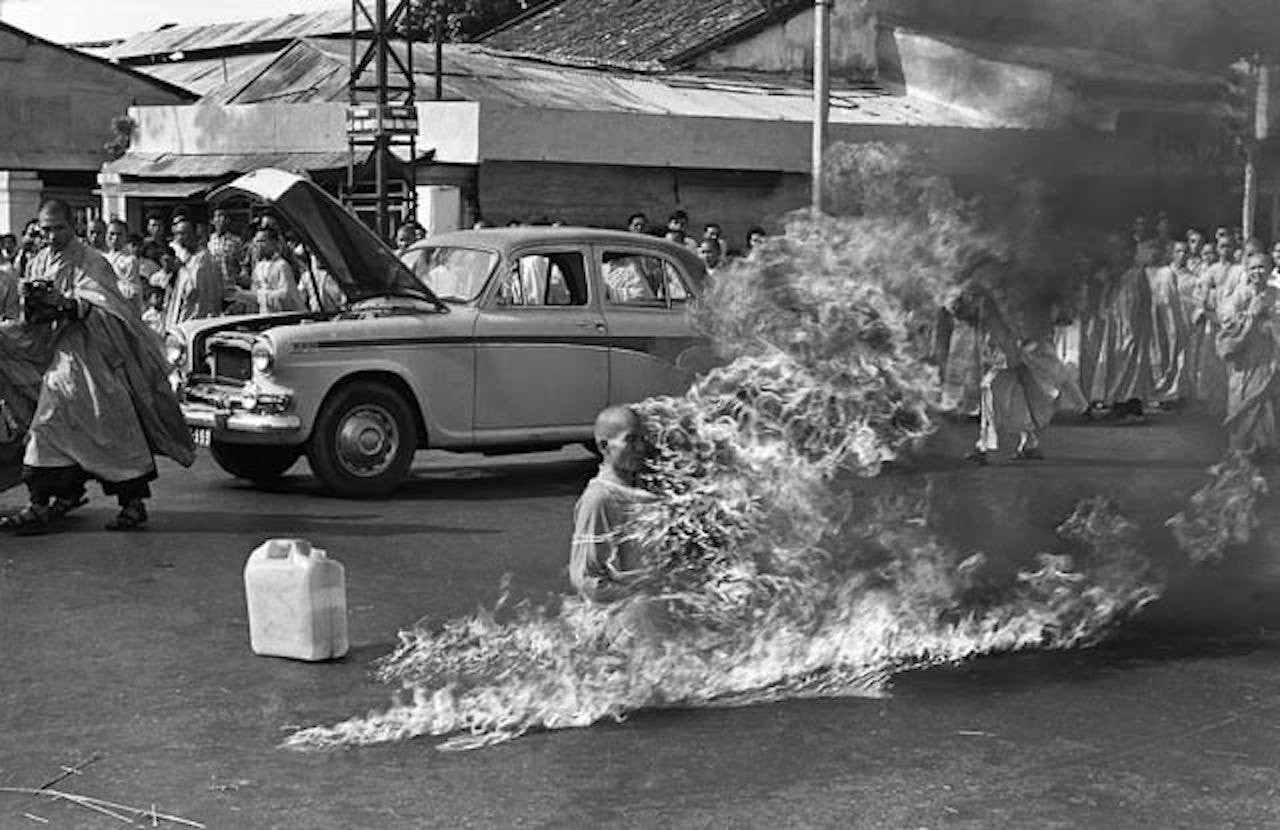
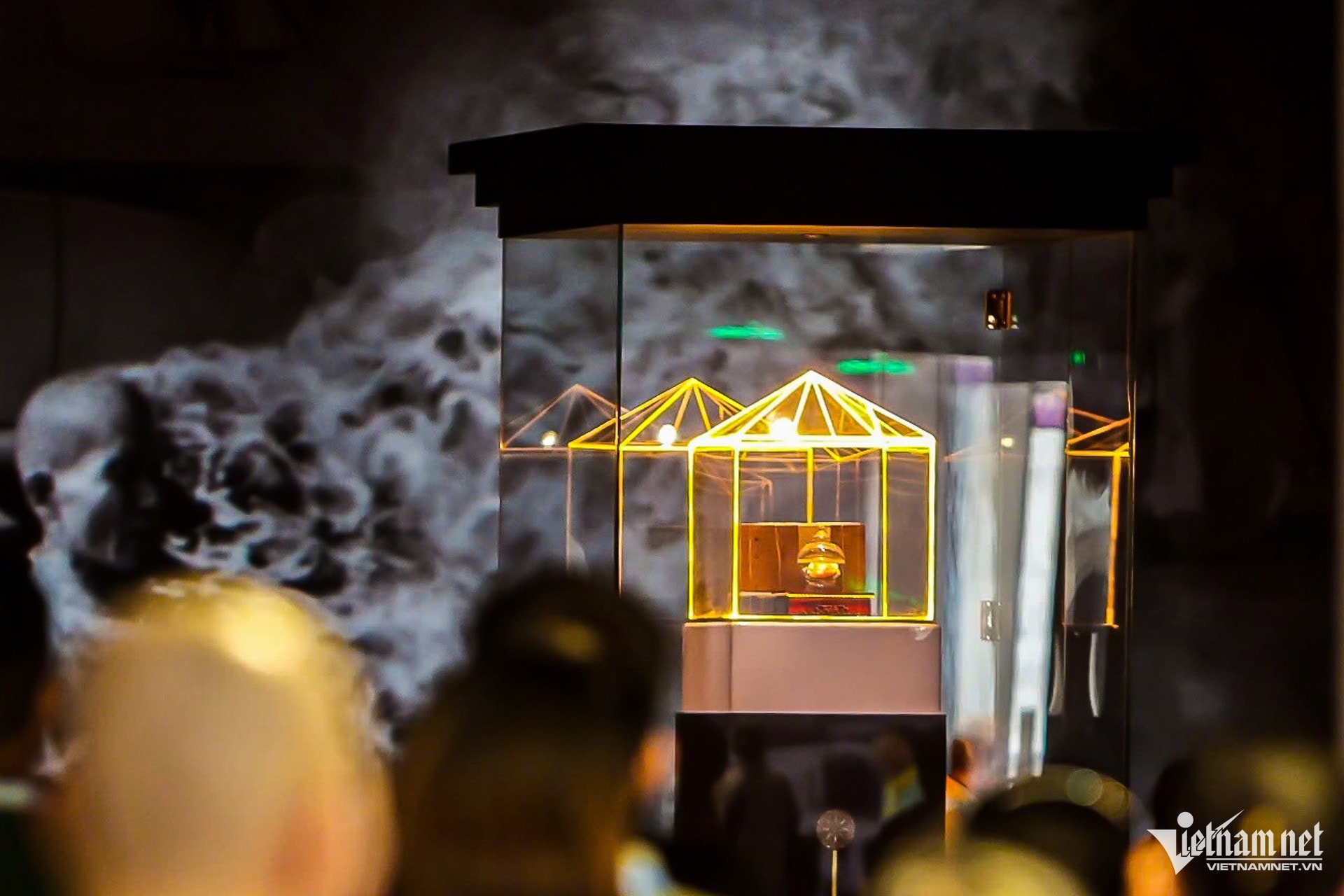
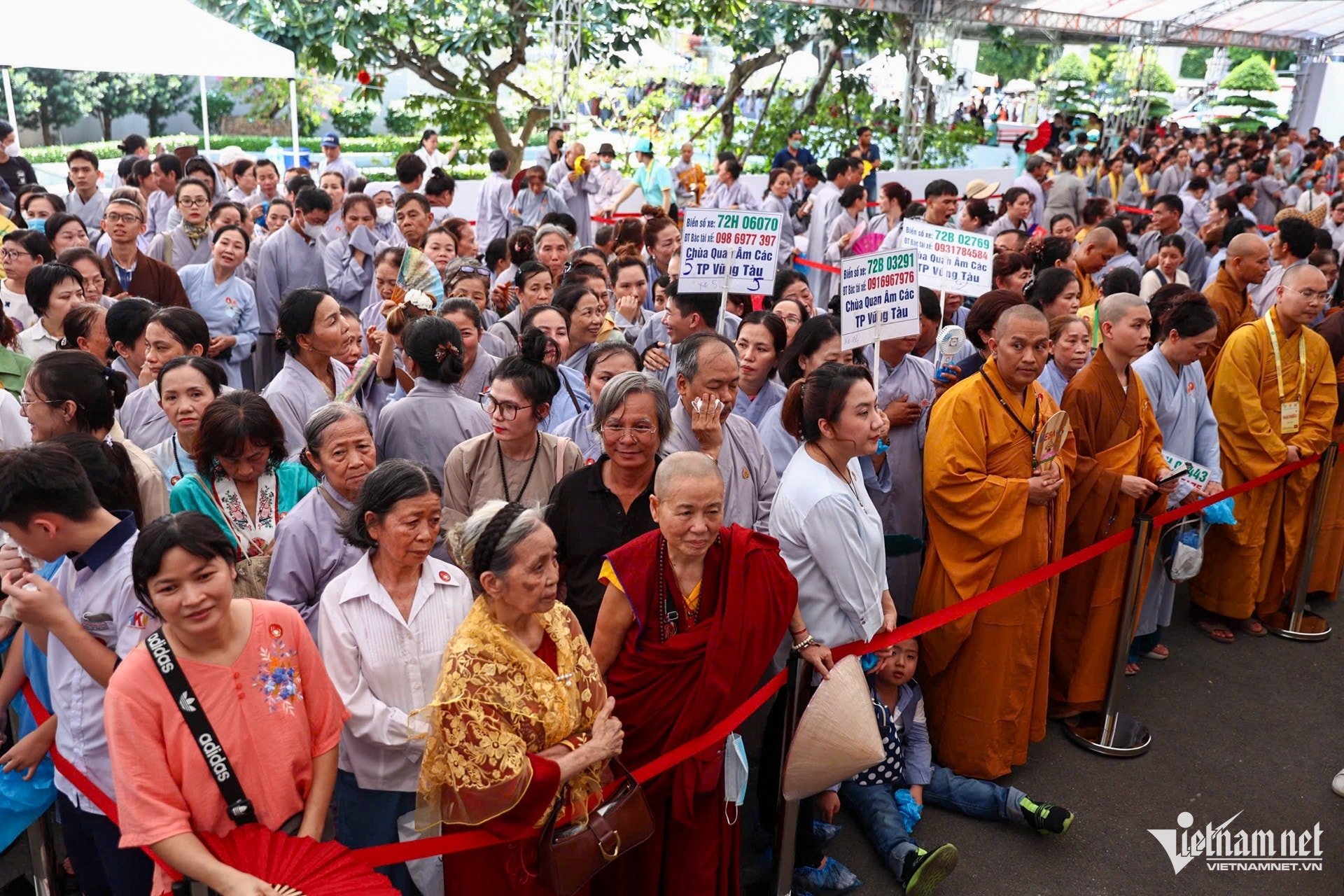
A report by the National Catholic Liaison Committee said that during the years of fighting against the US, more than 60,000 Catholic youths joined the army . Many families had 2 to 5 children who were soldiers. If including the youth volunteers, in many places, 50 to 70% of Catholic families had children participating in the frontline fighting. Many militia units in the Catholic region were Quyet Thang units, Heroic units such as the Ba Lang militia units (Thanh Hoa), Van Ly (Bui Chu), Thuong Kiem (Phat Diem).
1975-1985
After 1975, when the country was unified, the Religious Affairs Committee continued to operate, advising the Government on implementing unified religious policies across the country, typically Decree 297/CP. Despite facing many challenges during the subsidy period, the apparatus was still maintained and strengthened.
In 1980, the May Joint Letter of the Vietnamese Bishops' Council with the direction of Living the Gospel in the Heart of the Nation opened a new era for the organization and patriotic movement of Vietnamese Catholics. The first National Congress of Vietnamese Catholics for Building and Protecting the Fatherland and Protecting Peace took place in 1983.
In 1981, the first National Buddhist Congress held on November 7 unified 9 Buddhist sects into the Vietnam Buddhist Sangha, with the following directions of operation: Dharma - Nation - Socialism .
On March 27, 1985 , the Council of Ministers issued Decree No. 85-HDBT establishing the Government's Committee for Religious Affairs , marking an important step forward in religious work.
1986 to present
The Doi Moi (Renovation) process since 1986 has brought a new wind, more openness in views and policies towards religion. The Party and State have focused on perfecting the legal system and organizational structure.
In 1990, the Politburo issued Resolution No. 24-NQ/TW on strengthening religious work in the new situation, with three breakthrough orientation points:
*Belief and religion are the needs of a part of the people.
*Religion is a long-standing issue
*Religious ethics have many things that are suitable for the work of building a new society.
Every year, August 2 is taken as "Traditional Day of State Management of Religion"
Decision No. 445/QD-TTg dated May 27, 2005
In 2003 , the agency was officially renamed the Government Committee for Religious Affairs, affirming its government-level status.
In 2007, the Government Committee for Religious Affairs was transferred to the Ministry of Home Affairs, helping to strengthen unity in the management of internal affairs and administration.
Since 1990, the renovation policy has shown clear signs. Religious life has seen very important improvements; religious followers and dignitaries have recovered and grown; places of worship and schools for training dignitaries have increased; large-scale festivals of religious organizations have attracted hundreds of thousands of participants; international relations of religious organizations have expanded; scriptures and religious supplies have been guaranteed...
Growing over 10 million followers in 20 years
| 2003 | 2023 | |
| Believers | 17.4 million | 27.7 million |
| Religion | 6 | 16 |
| Organizations recognized or granted registration for religious activities | 16 | 43 |
| dignitaries | 34,200 | More than 54,500 |
| Job title | Nearly 79,000 | Nearly 145,000 |
| Places of worship | More than 20,900 | 29,890 |
Source: White Paper "Religion and Religious Policy in Vietnam" 2023
The 2013 Constitution, adopted on November 28, 2013 and effective from January 1, 2014, is an important step forward in defining the right to freedom of belief and religion. The 2013 Constitution promotes the value of human rights and civil rights.
On November 18, 2016 , the Law on Belief and Religion was passed by the National Assembly and took effect from January 1, 2018, marking an important milestone in the process of perfecting the law on belief and religion in Vietnam.
In 2018 , the Government Committee for Religious Affairs was assigned the additional function of state management in the field of beliefs.
From March 1, 2025 , the Government Committee for Religious Affairs under the Ministry of Ethnic Minorities and Religions is a strategic step to integrate the management of ethnic and religious affairs, creating a unified, specialized focal agency, aiming for higher efficiency in national governance.
During the development process, the Government Committee for Religious Affairs plays an important role in religious activities: Strategic advice on policies and laws; Implementation and supervision of the implementation of policies and laws; Bridge between the State and religious organizations; Promote cultural values, ethics and resources of religions; Ensure security, order and social stability.
A particularly important content in the implementation of religious policy in Vietnam since the renovation until now is the recognition of religious organizations . In 2004, the whole country had 16 religious organizations recognized by the State belonging to 6 religions. By the end of 2023, the State had recognized and granted certificates of registration of operation to 43 religious organizations belonging to 16 religions.
From a few training facilities for clergy, up to now, religions in Vietnam have 66 training facilities for clergy with about 10,000 students studying. This is an activity that creates a new face for the development of religion in Vietnam in the renovation period.
Religious organizations in Vietnam have all built and maintained a path of religious practice that is closely connected with and accompanies the nation, such as: Catholicism with "Living the Gospel in the heart of the nation to serve the happiness of compatriots" ; Buddhism with " Dharma - Nation - Socialism" ; Protestant organizations with "Living the Gospel, Serving God, Serving the Fatherland and the People" ; Cao Dai sects with "Glory to the Country, Bright Religion" ; Hoa Hao Buddhism with " For Dharma, for the Nation "; Pure Land Buddhist Lay Association of Vietnam with " Study, practice, do good, benefit the country, benefit the people "; Islam with "The reason for living a good life, a good life "; Buddhism of the Four Graces and Filial Piety with " Practice the Four Graces - Live a Filial Piety - For great national unity" ...
Religions in Vietnam contribute to preserving, cultivating and enriching traditional cultural values, bringing humanistic and ethical values, and having a positive influence on social life. The good and charitable values of religions are concretized into practical actions. Religion in Vietnam is not only a cultural element, reflecting spiritual needs but is truly an important resource contributing to the development of the country.
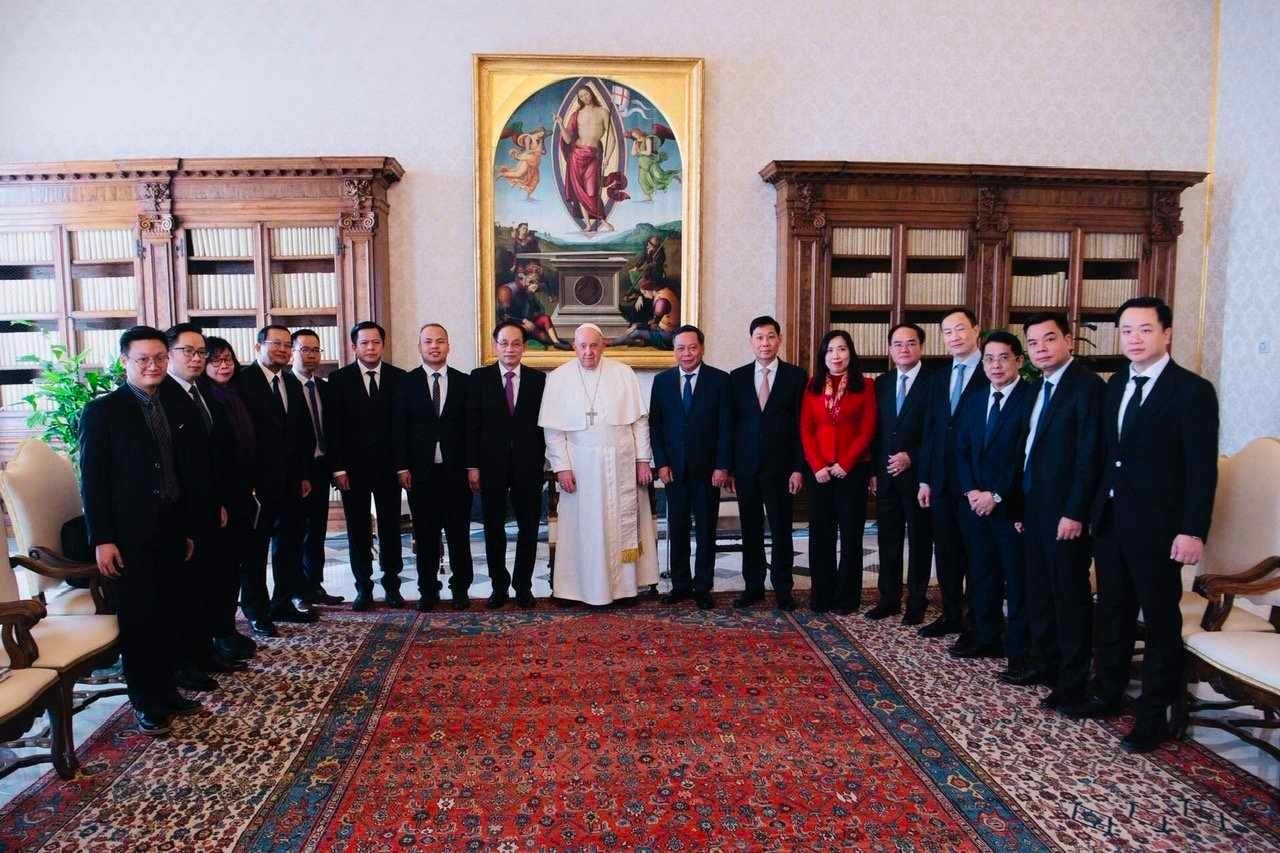 | 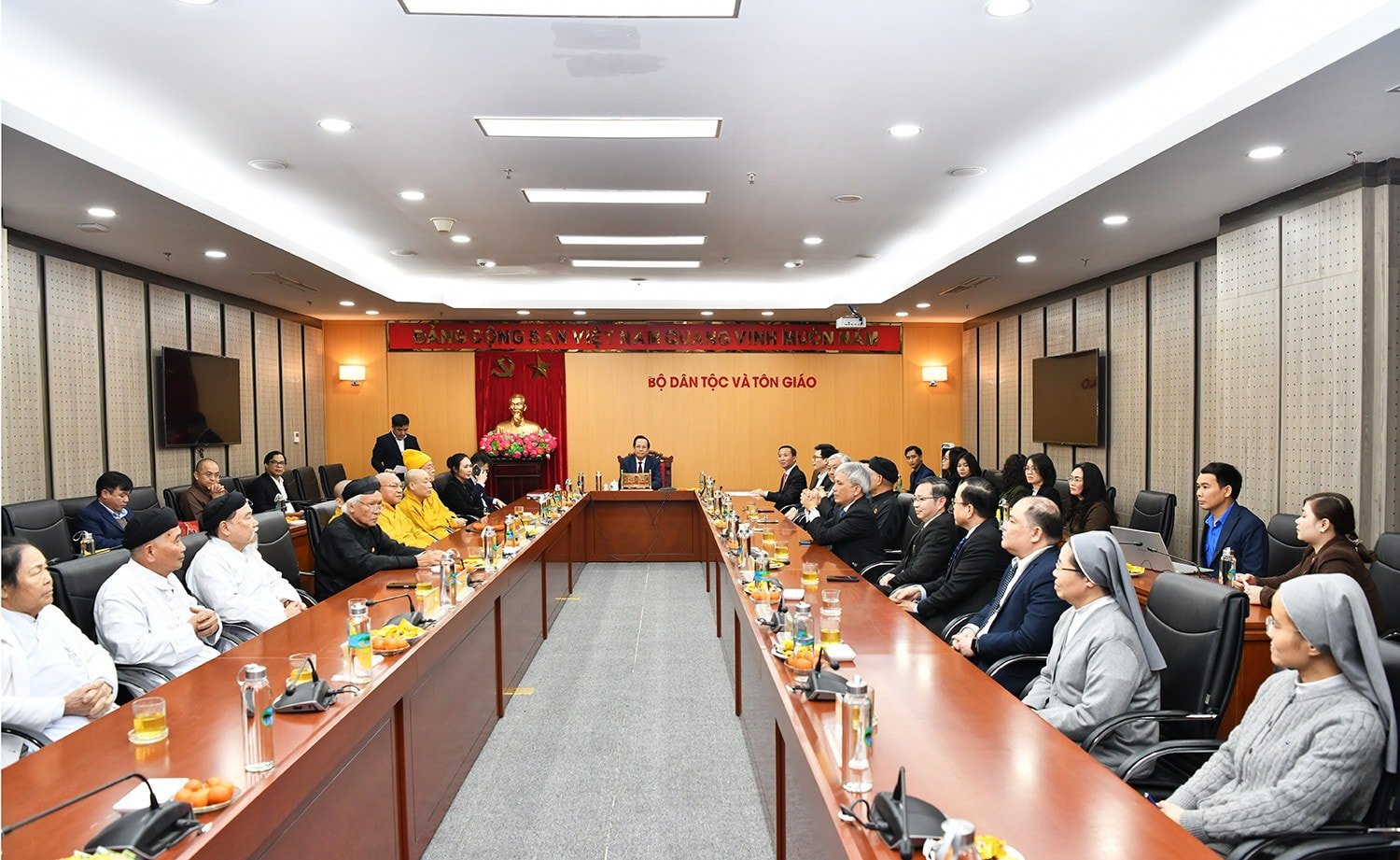 |
Religious people actively participate in socio-economic development.
| * About 300 kindergartens, 2,000 preschool education facilities, 12 vocational training facilities belonging to religious organizations (1 college, 1 secondary school, 10 vocational education centers); many charity classes, schools, preschool classes... established by religious organizations. *Over 500 medical facilities and charitable clinics established by religious organizations. * 125 social assistance facilities belonging to licensed religious organizations are caring for and nurturing over 11,800 social protection beneficiaries. During the Covid-19 pandemic, religious organizations actively mobilized dignitaries, clergy, monks and followers to participate in epidemic prevention and control; contributed resources (with thousands of volunteers volunteering to support frontline forces against the epidemic and goods, necessities, and medical equipment); joined hands with authorities at all levels with many good models, creative, practical, and effective ways of doing things. Source: Government Committee for Religious Affairs - Ministry of Ethnic Minorities and Religions |
Some pictures of religious activities in Vietnam:
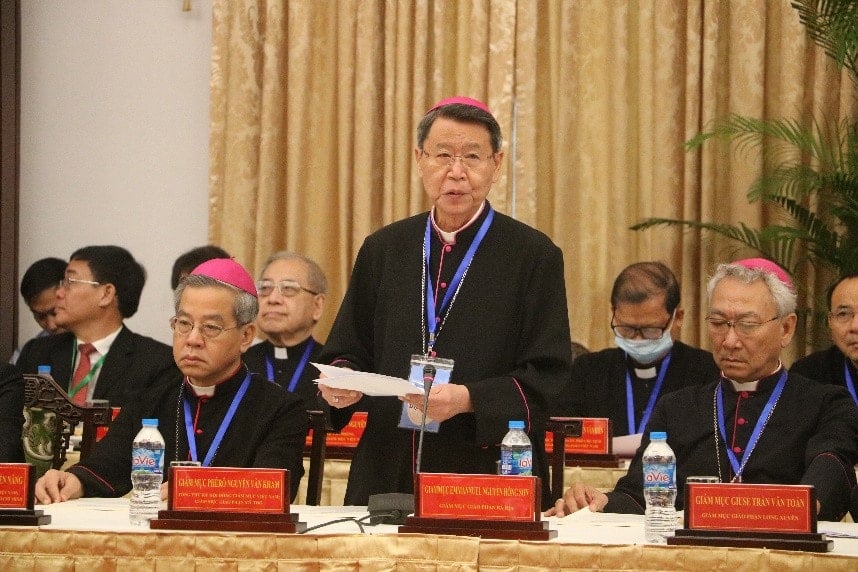
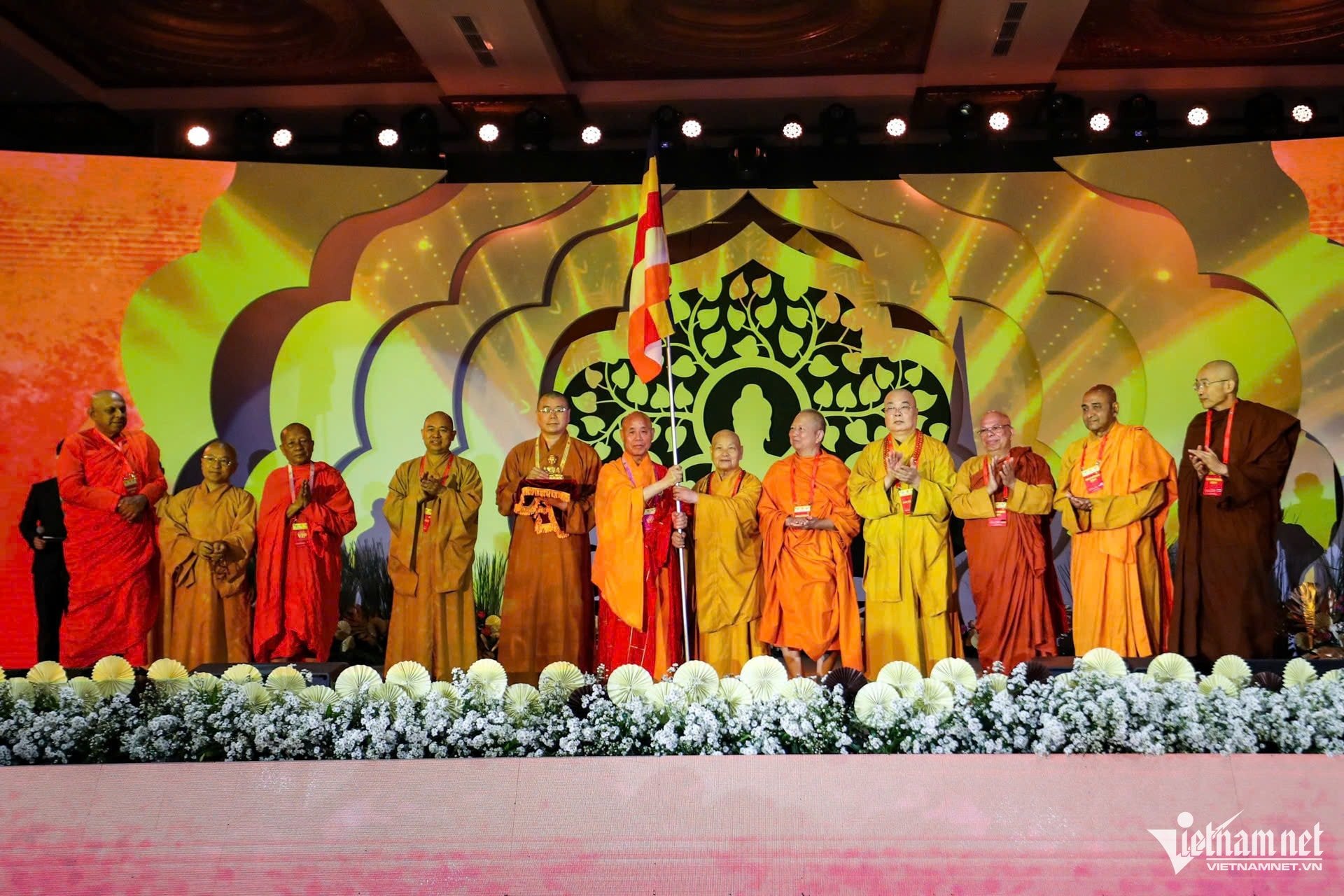
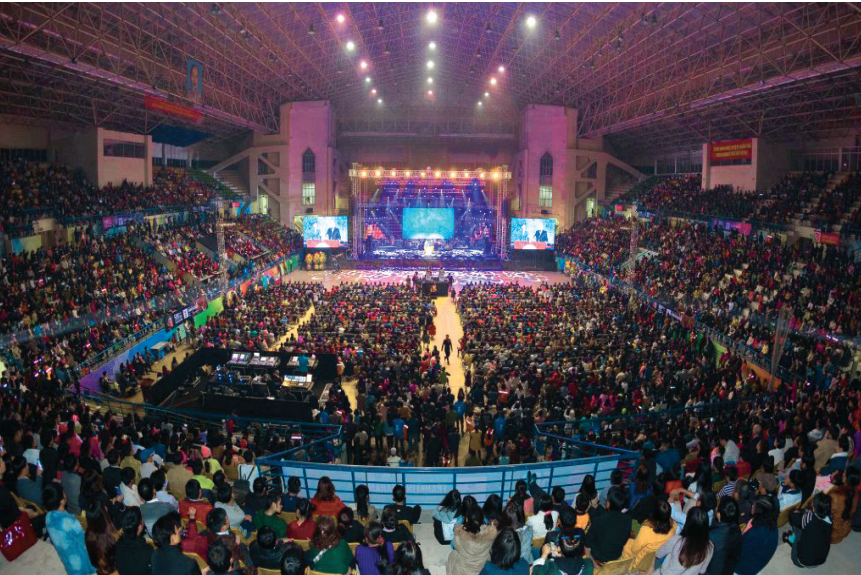
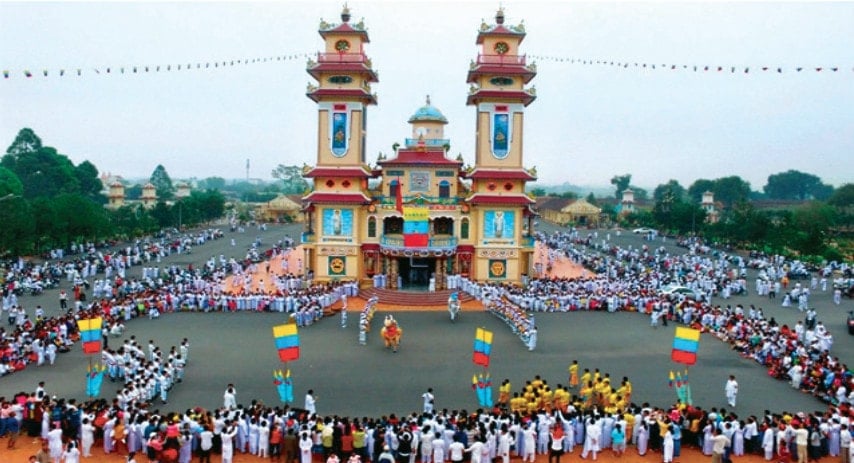
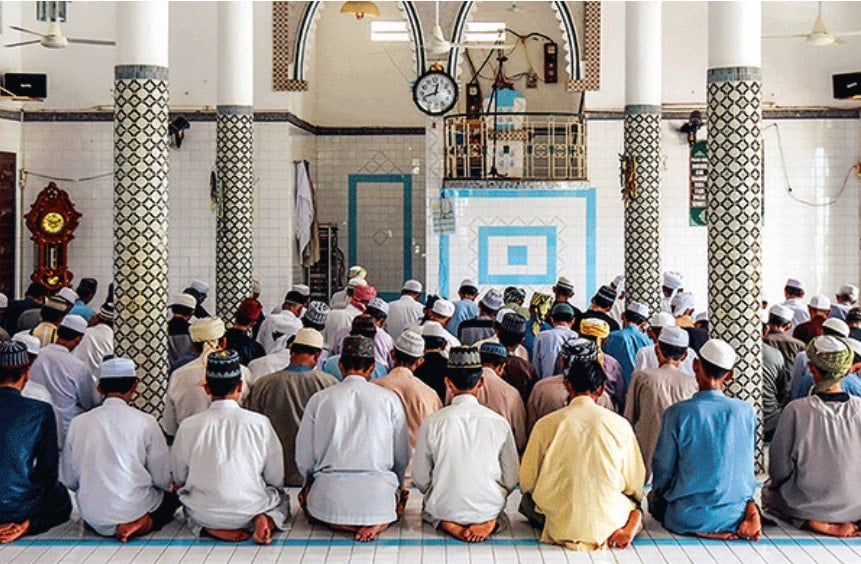
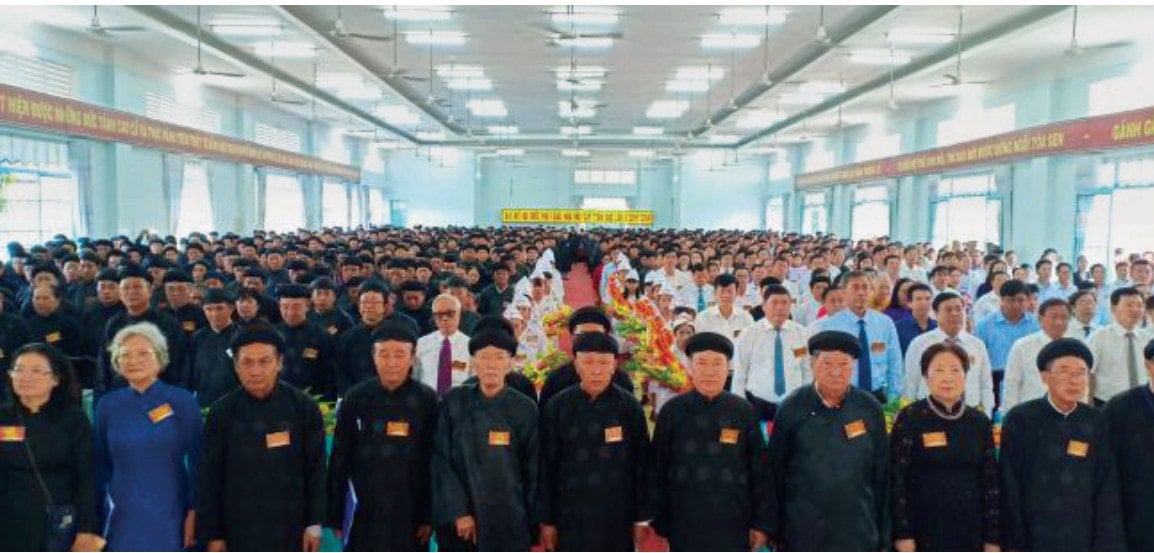
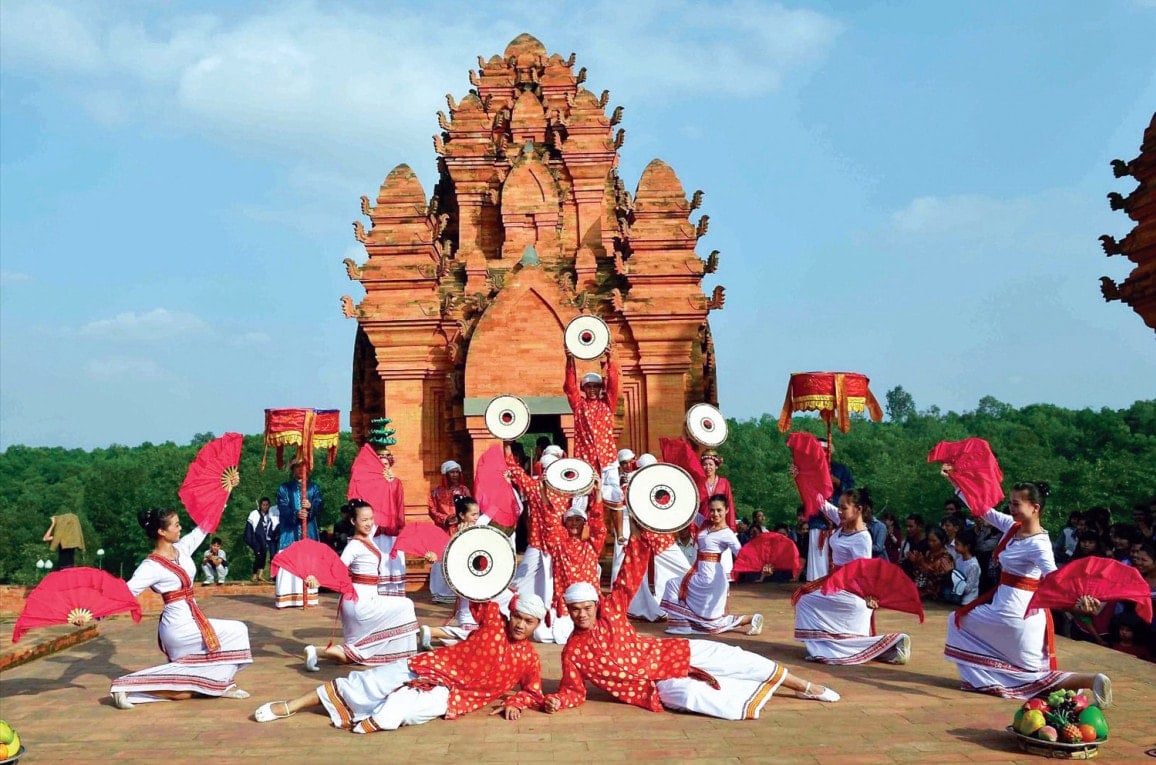
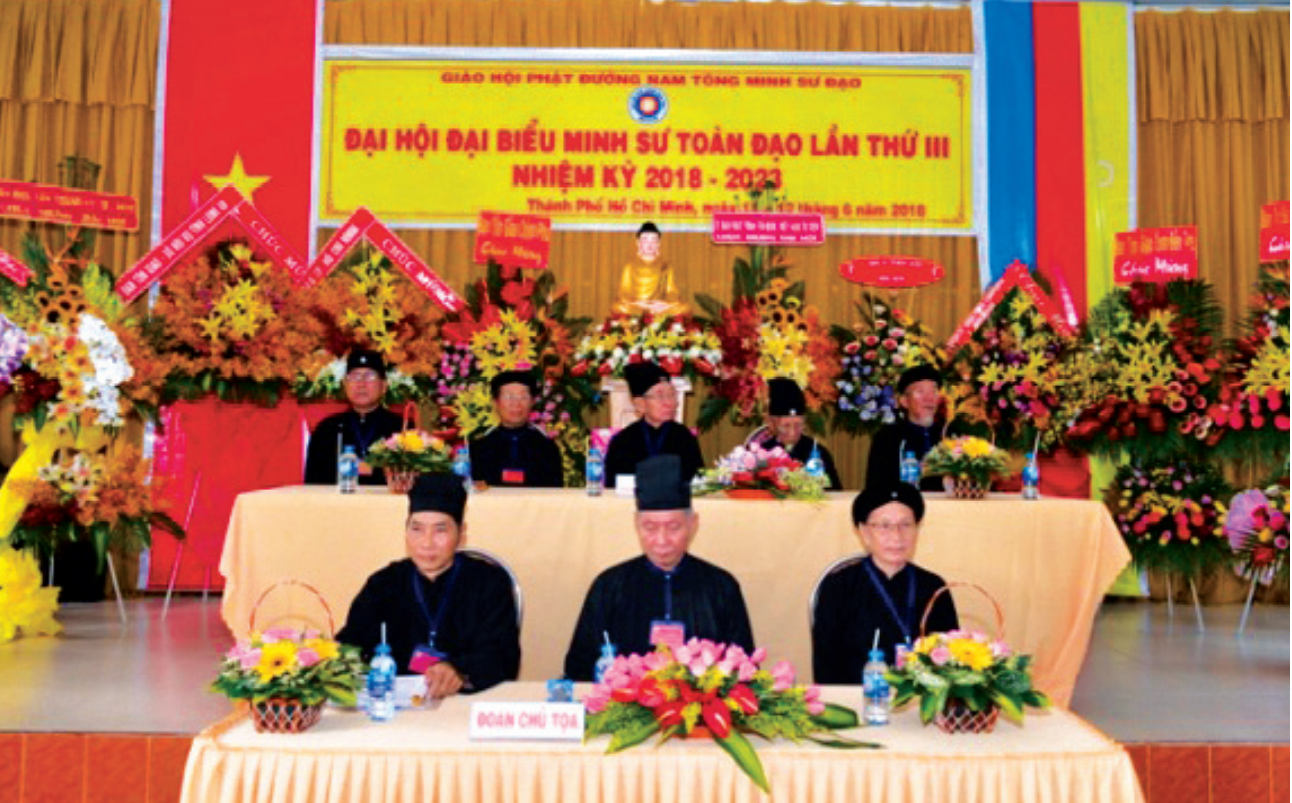
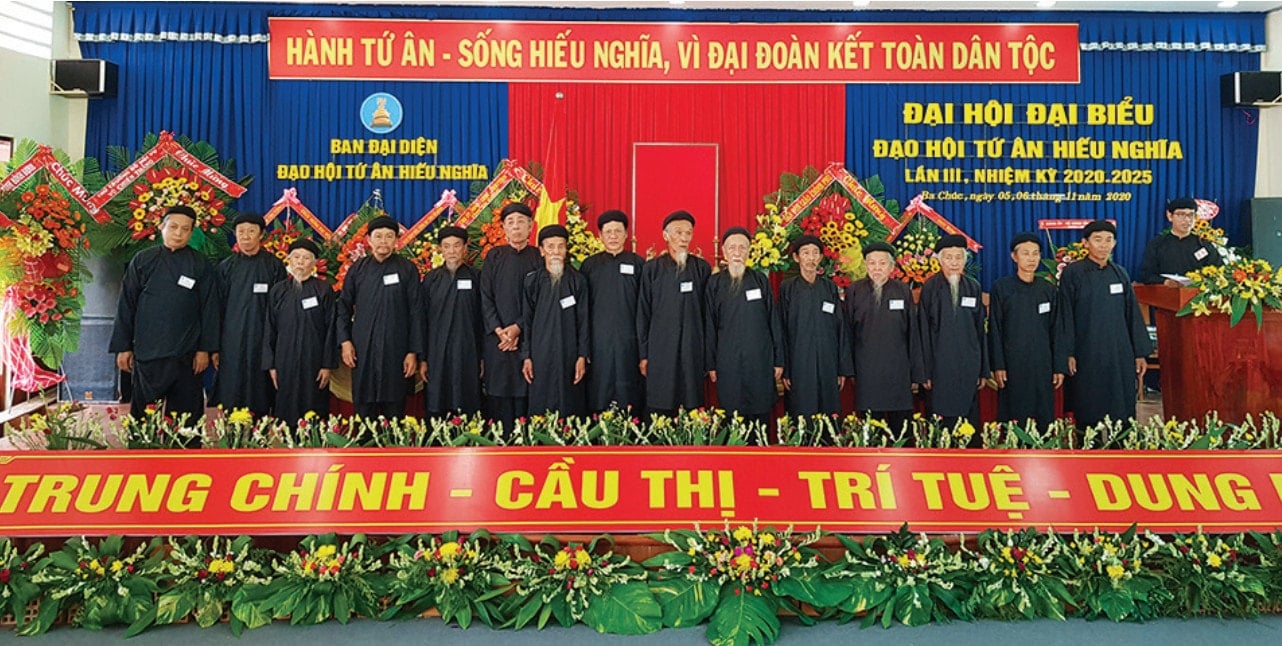
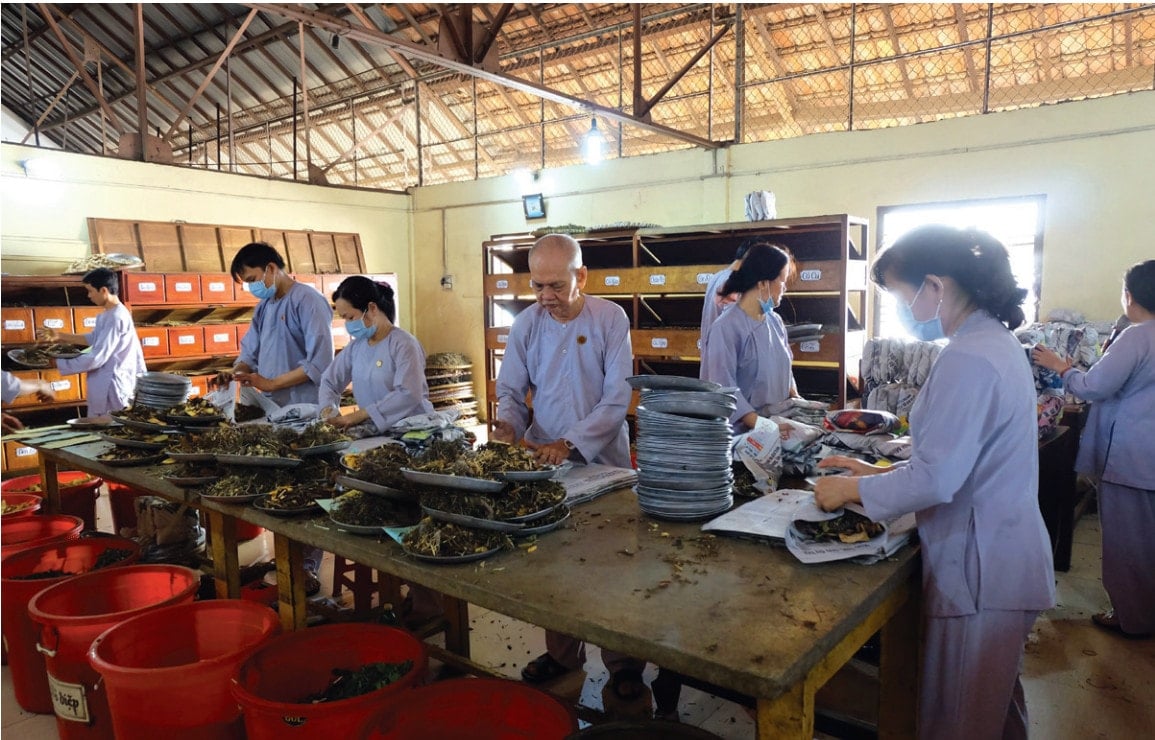
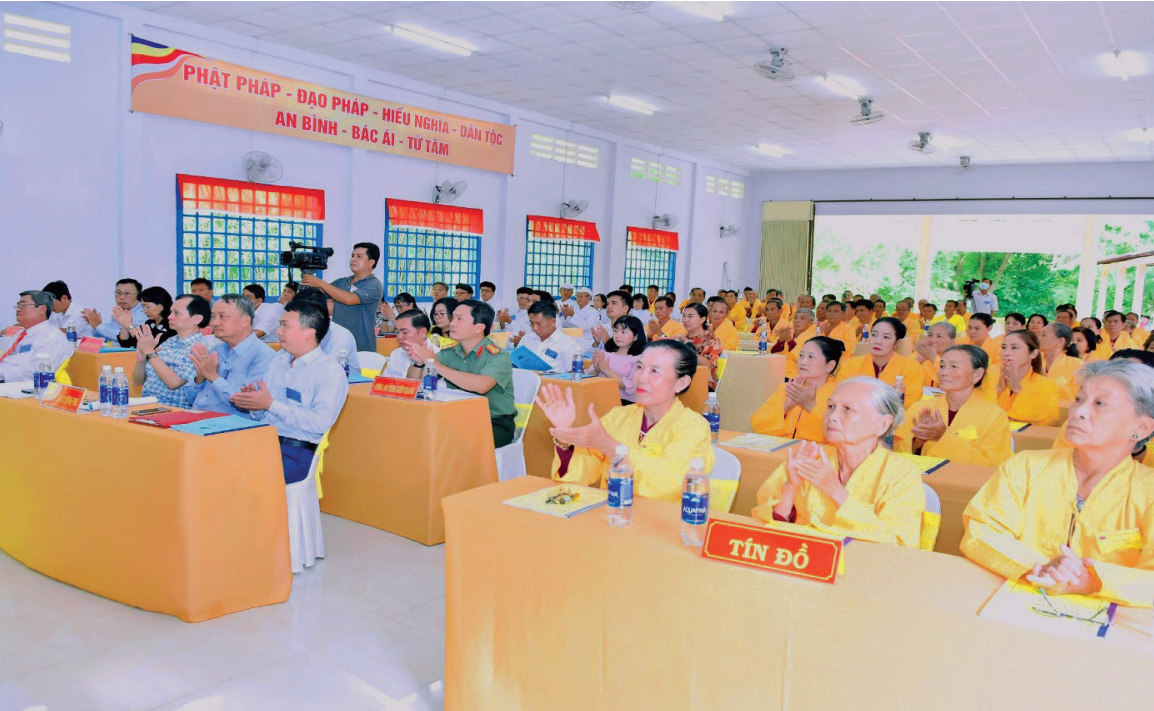
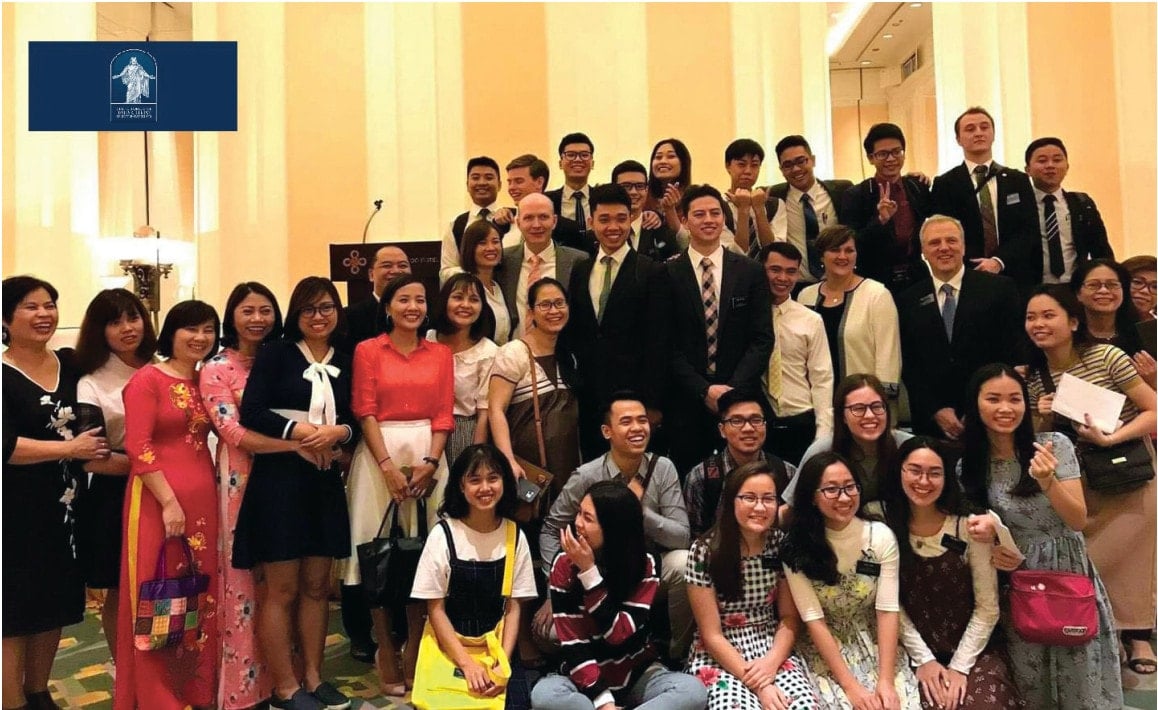
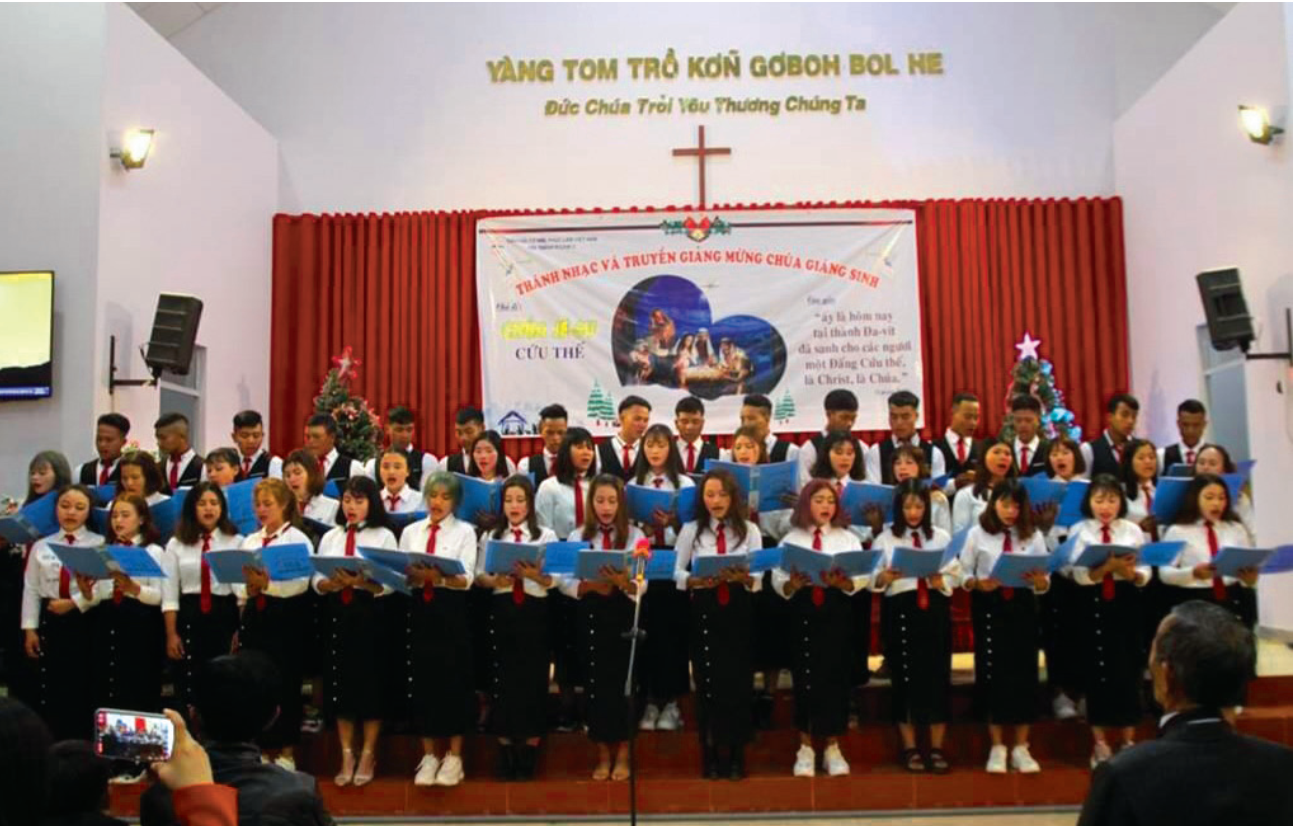
Photo source: Government Committee for Religious Affairs/White Book on Religion 2023-Religion Publishing House/Vietnam Catholic Solidarity Committee/Can Tho Newspaper
5 achievements in religious work
| Synchronous and transparent legal system : From the Constitution to Laws, Ordinances, Decrees and Circulars, the legal system on beliefs and religions is increasingly perfected, creating a solid legal basis for the implementation of freedom of belief and religion. Diverse and vibrant religious life : 95% of Vietnam's population has a religious life, with 16 recognized religions, 43 religious organizations granted registration of operations and recognized legal status (as of mid-2025). Respect and ensure all legitimate rights, allowing religions to operate freely within the legal framework : Develop in number and activities; Worship and training facilities are restored, renovated, and newly built; Religious publications and documents are licensed and widely circulated; Diverse social activities; Organize large-scale events and festivals. Strengthening national solidarity : Religions coexist equally and harmoniously in a multicultural and multi-religious environment. International cooperation and integration: Vietnam proactively participates in international forums on religion, enhances bilateral and multilateral dialogues, shares experiences and provides transparent information on the religious situation in the country, and rejects distorted and incorrect allegations about religious freedom in Vietnam. According to the Electronic Information Portal of the Ministry of Ethnic Minorities and Religions |
Synchronous and transparent legal system : From the Constitution to Laws, Ordinances, Decrees and Circulars, the legal system on beliefs and religions is increasingly perfected, creating a solid legal basis for the implementation of freedom of belief and religion.
Diverse and vibrant religious life : 95% of Vietnam's population has a religious life, with 16 recognized religions, 43 religious organizations granted registration of operations and recognized legal status (as of mid-2025).
Respect and ensure all legitimate rights, allowing religions to operate freely within the legal framework : Develop in number and activities; Worship and training facilities are restored, renovated, and newly built; Religious publications and documents are licensed and widely circulated; Diverse social activities; Organize large-scale events and festivals.
Strengthening national solidarity : Religions coexist equally and harmoniously in a multicultural and multi-religious environment.
International cooperation and integration: Vietnam proactively participates in international forums on religion, enhances bilateral and multilateral dialogues, shares experiences and provides transparent information on the religious situation in the country, and rejects distorted and incorrect allegations about religious freedom in Vietnam.
According to the Electronic Information Portal of the Ministry of Ethnic Minorities and Religions
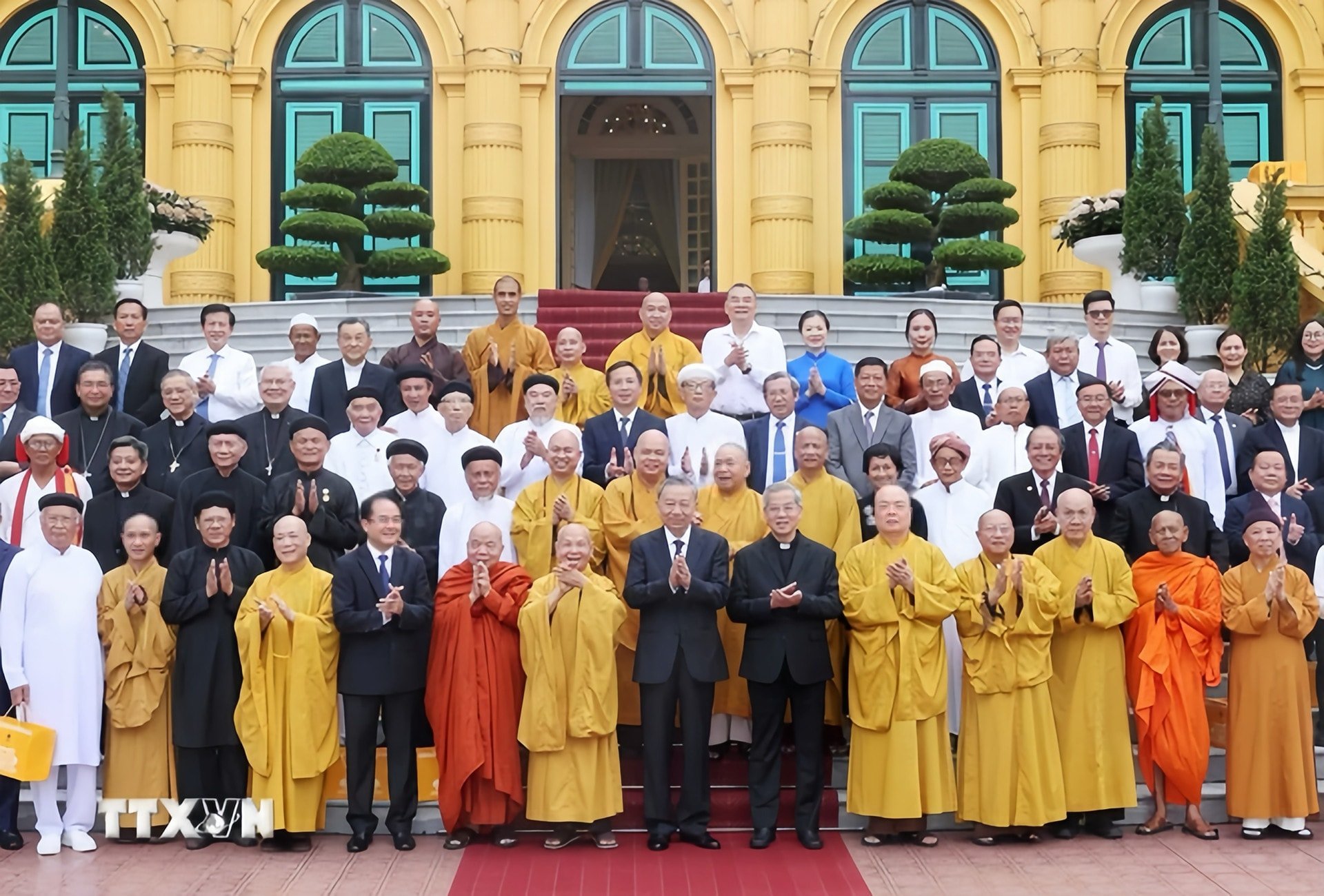
16 religions, nearly 28 million followers
| Religion | 2008 | 2023 | |
| 1 | Buddhism | ||
| Believers | 10 million | >14 million | |
| Places of worship | 16,984 | 18,544 | |
| 2 | Catholicism | ||
| Believers | 6.15 million | >7 million | |
| Places of worship | >7000 | 7771 | |
| 3 | Protestantism | ||
| Believers | >880 thousand | >1.2 million | |
| Places of worship | 340 | nearly 900 | |
| 4 | Cao Dai religion | ||
| Believers | >1 million | > 1.2 million | |
| Places of worship | 1,290 | >1,300 | |
| 5 | Hoa Hao Buddhism | ||
| Believers | >1.2 million | >1.5 million | |
| Places of worship | 39 | 50 | |
| 6 | Islam | ||
| Believers | >72,000 | >80,000 | |
| Places of worship | 79 | 89 | |
| 7 | Baha'i Faith | ||
| Believers | 7,000 | >7,000 | |
| Places of worship | 2 | ||
| 8 | Pure Land Buddhist Lay Association of Vietnam | ||
| Believers | >500,000 | >600,000 | |
| Places of worship | 206 | 212 | |
| 9 | Seventh-day Adventist | ||
| Believers | >16,000 | >18,000 | |
| Places of worship | >70 | >74 | |
| 10 | Buddhism Four Graces and Righteousness | ||
| Believers | >70,000 | 78,000 | |
| Places of worship | >70 | 74 | |
| 11 | The Way of the Master | ||
| Believers | >5000 | ||
| Places of worship | 12 | ||
| 12 | Minh Ly Dao - Tam Tong Temple | ||
| Believers | 650 | ||
| Places of worship | 4 | ||
| 13 | Brahmanism | ||
| Believers | >66,000 | ||
| Places of worship | 42 | ||
| 14 | The Church of Jesus Christ of Latter-day Saints | ||
| Believers | >2,300 | ||
| Places of worship | |||
| 15 | Dao Buu Son Ky Huong | ||
| Believers | >10,000 | >10,000 | |
| Places of worship | 8 | 8 | |
| 16 | Ta Lon Buddhism of Filial Piety | ||
| Believers | >6,500 | ||
| Places of worship | 8 |
| Religion | 2008 | 2023 | |
| 1 | Buddhism | ||
| Believers | 10 million | >14 million | |
| Places of worship | 16,984 | 18,544 | |
| 2 | Catholicism | ||
| Believers | 6.15 million | >7 million | |
| Places of worship | >7000 | 7771 | |
| 3 | Protestantism | ||
| Believers | >880 thousand | >1.2 million | |
| Places of worship | 340 | nearly 900 | |
| 4 | Cao Dai religion | ||
| Believers | >1 million | > 1.2 million | |
| Places of worship | 1,290 | >1,300 | |
| 5 | Hoa Hao Buddhism | ||
| Believers | >1.2 million | >1.5 million | |
| Places of worship | 39 | 50 | |
| 6 | Islam | ||
| Believers | >72,000 | >80,000 | |
| Places of worship | 79 | 89 | |
| 7 | Baha'i Faith | ||
| Believers | 7,000 | >7,000 | |
| Places of worship | 2 | ||
| 8 | Pure Land Buddhist Lay Association of Vietnam | ||
| Believers | >500,000 | >600,000 | |
| Places of worship | 206 | 212 | |
| 9 | Seventh-day Adventist | ||
| Believers | >16,000 | >18,000 | |
| Places of worship | >70 | >74 | |
| 10 | Buddhism Four Graces and Righteousness | ||
| Believers | >70,000 | 78,000 | |
| Places of worship | >70 | 74 | |
| 11 | The Way of the Master | ||
| Believers | >5000 | ||
| Places of worship | 12 | ||
| 12 | Minh Ly Dao - Tam Tong Temple | ||
| Believers | 650 | ||
| Places of worship | 4 | ||
| 13 | Brahmanism | ||
| Believers | >66,000 | ||
| Places of worship | 42 | ||
| 14 | The Church of Jesus Christ of Latter-day Saints | ||
| Believers | >2,300 | ||
| Places of worship | |||
| 15 | Dao Buu Son Ky Huong | ||
| Believers | >10,000 | >10,000 | |
| Places of worship | 8 | 8 | |
| 16 | Ta Lon Buddhism of Filial Piety | ||
| Believers | >6,500 | ||
| Places of worship | 8 |
Source: White Paper "Religion and Religious Policy in Vietnam" 2023
Source: https://baonghean.vn/viet-nam-co-16-ton-giao-gan-28-trieu-tin-do-10303662.html



![[Photo] Fall Fair 2025 and impressive records](https://vphoto.vietnam.vn/thumb/1200x675/vietnam/resource/IMAGE/2025/11/03/1762180761230_ndo_br_tk-hcmt-15-jpg.webp)
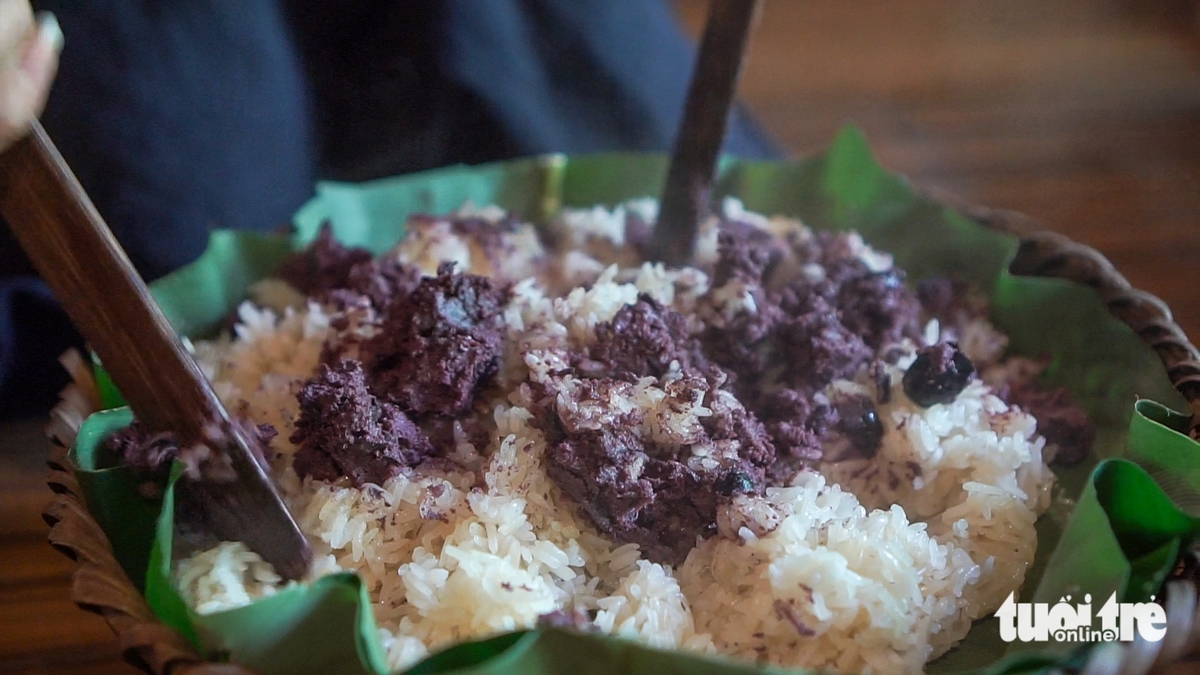
![[Photo] General Secretary To Lam receives Singaporean Ambassador Jaya Ratnam](https://vphoto.vietnam.vn/thumb/1200x675/vietnam/resource/IMAGE/2025/11/03/1762171461424_a1-bnd-5309-9100-jpg.webp)
![[Photo] Prime Minister Pham Minh Chinh receives the Chairman of the Japan-Vietnam Friendship Association in the Kansai region](https://vphoto.vietnam.vn/thumb/1200x675/vietnam/resource/IMAGE/2025/11/03/1762176259003_ndo_br_dsc-9224-jpg.webp)
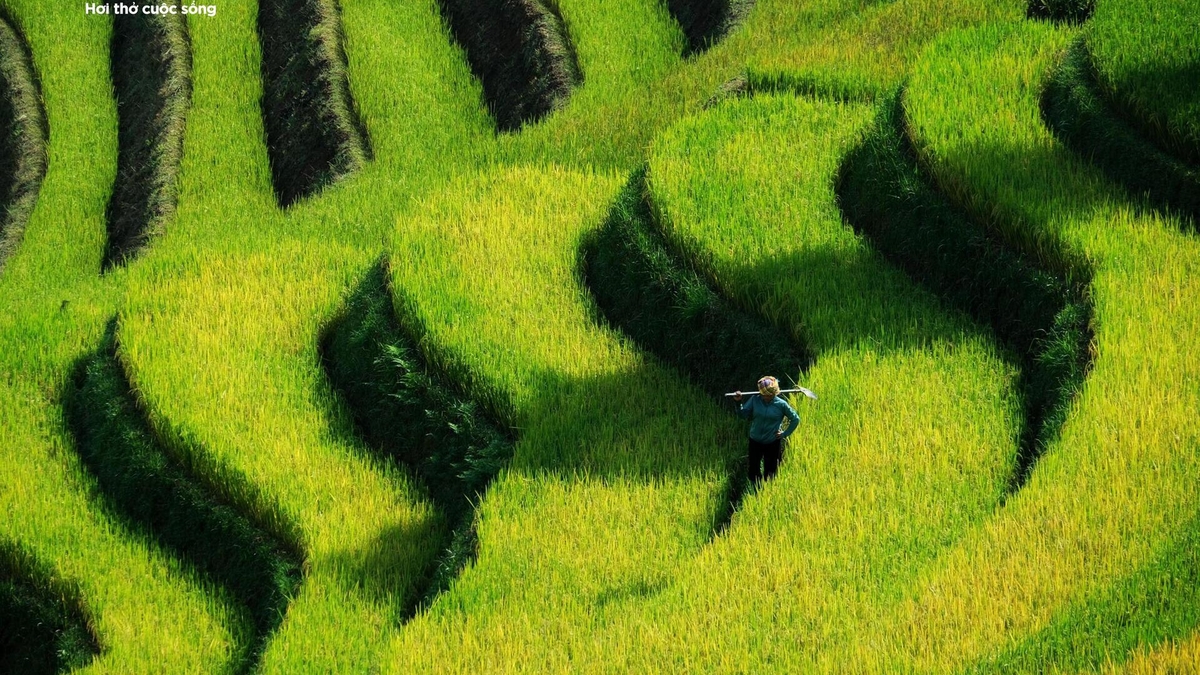
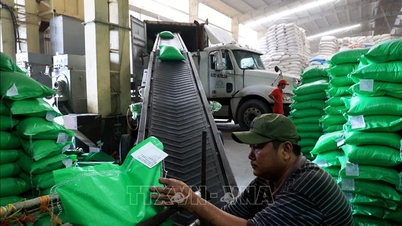


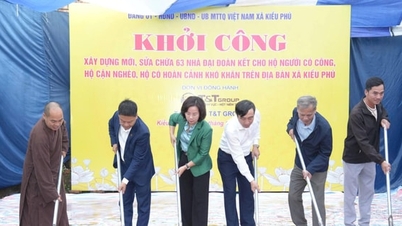

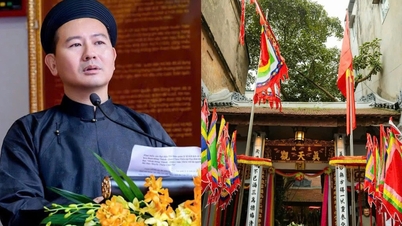

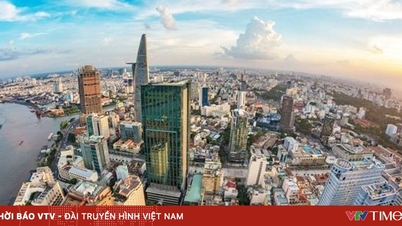

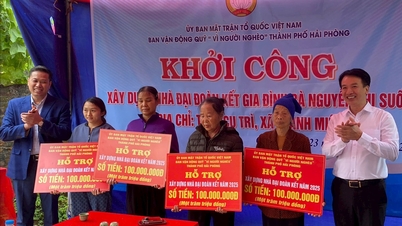







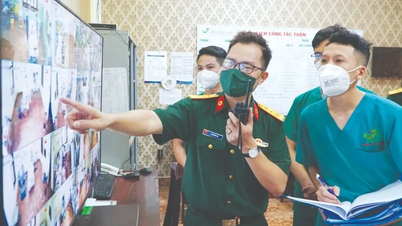

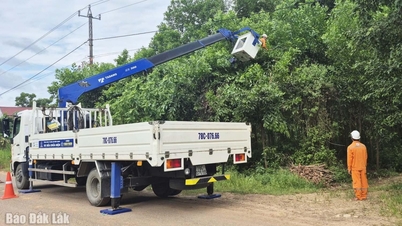

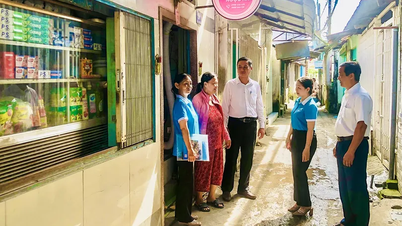






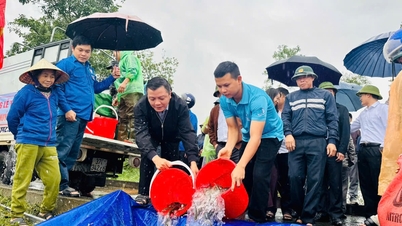
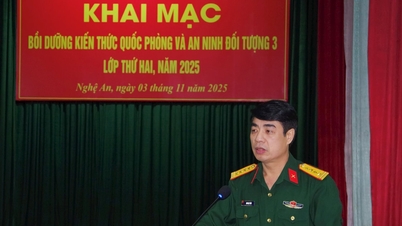


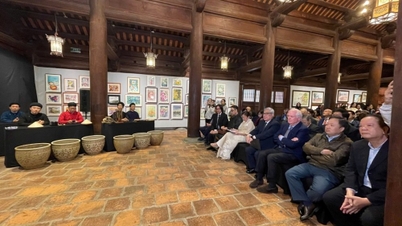

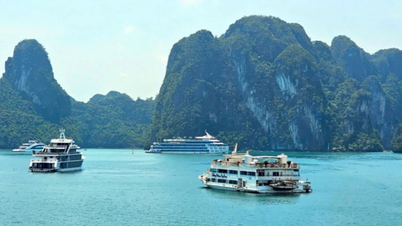

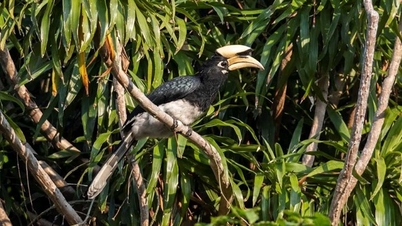

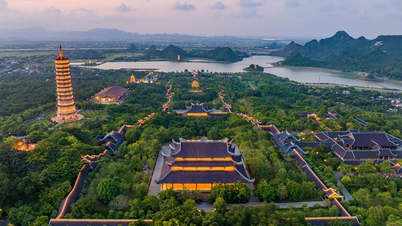

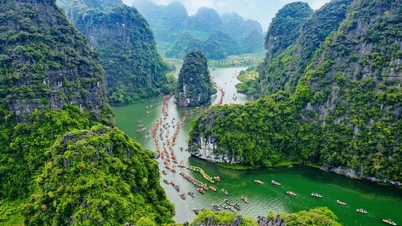

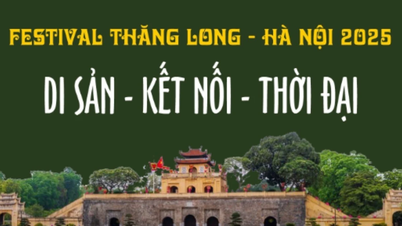



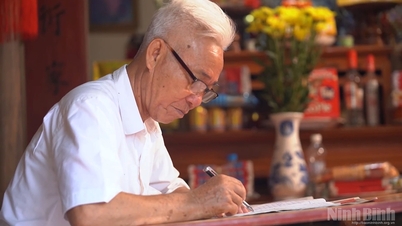


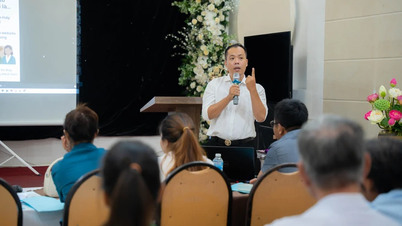

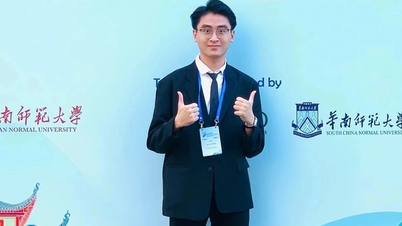
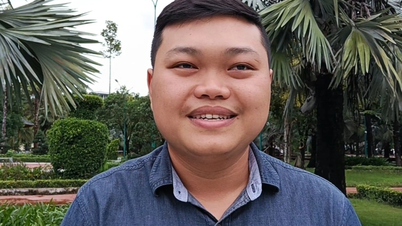





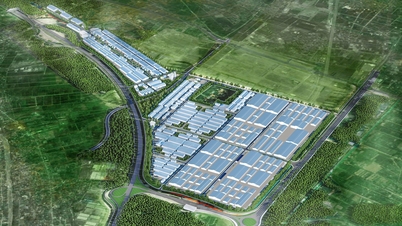
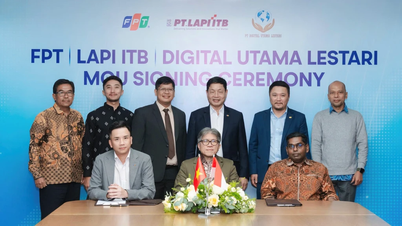

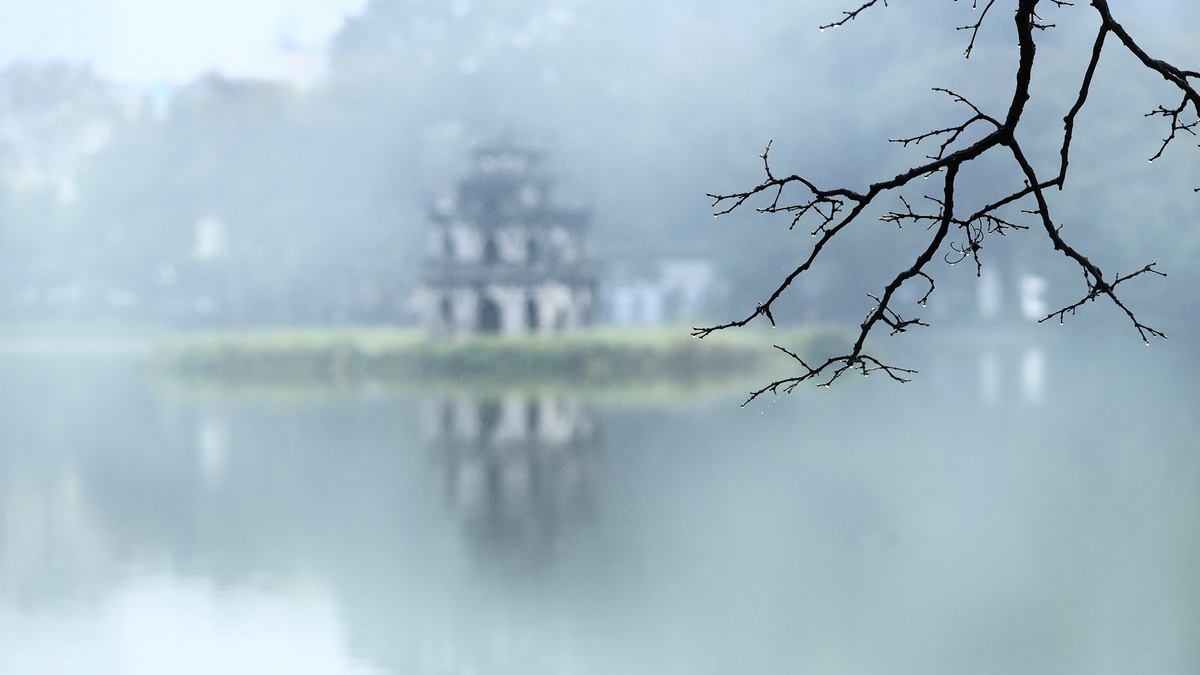

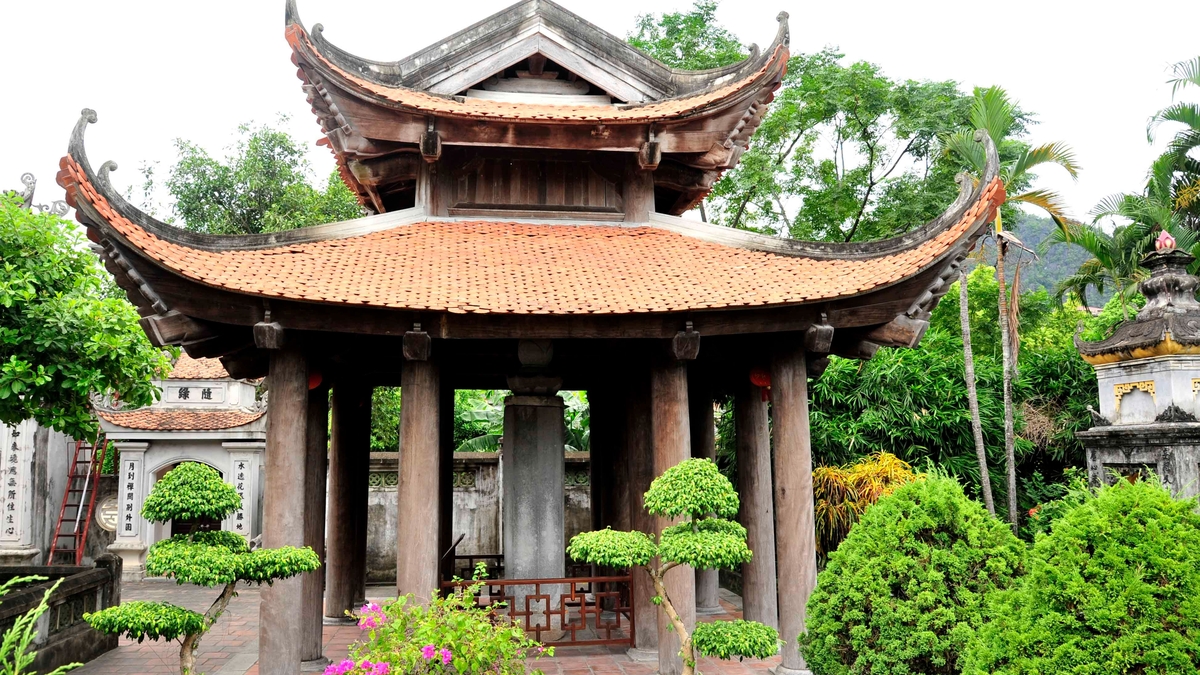
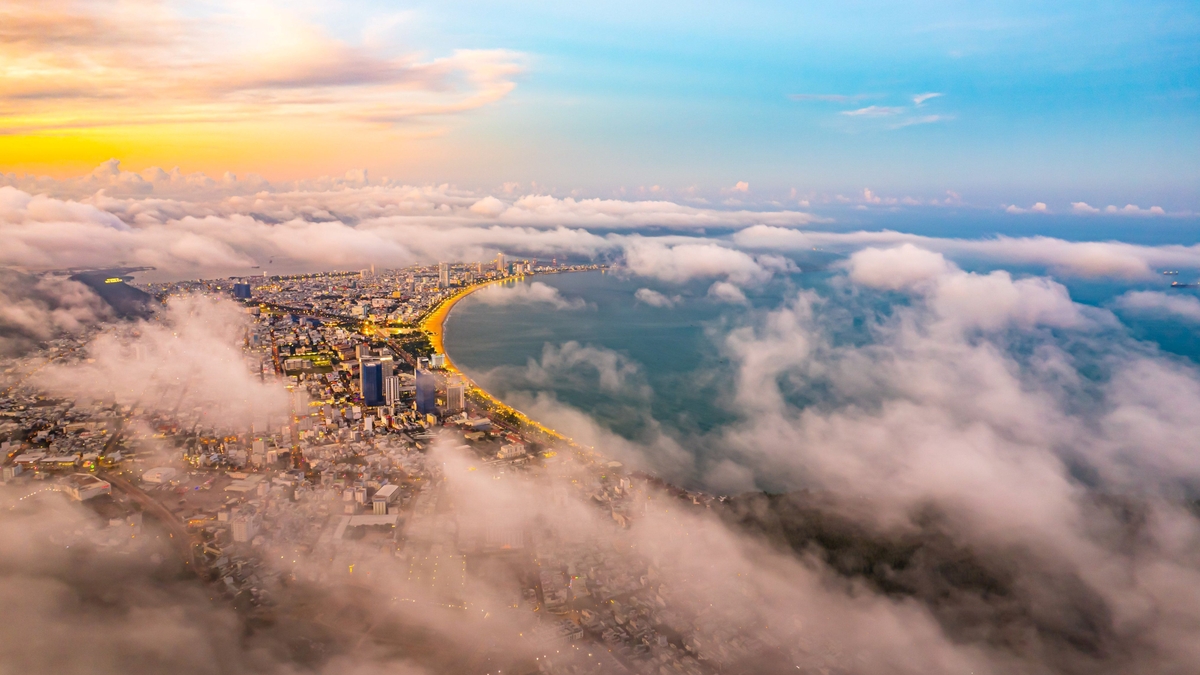
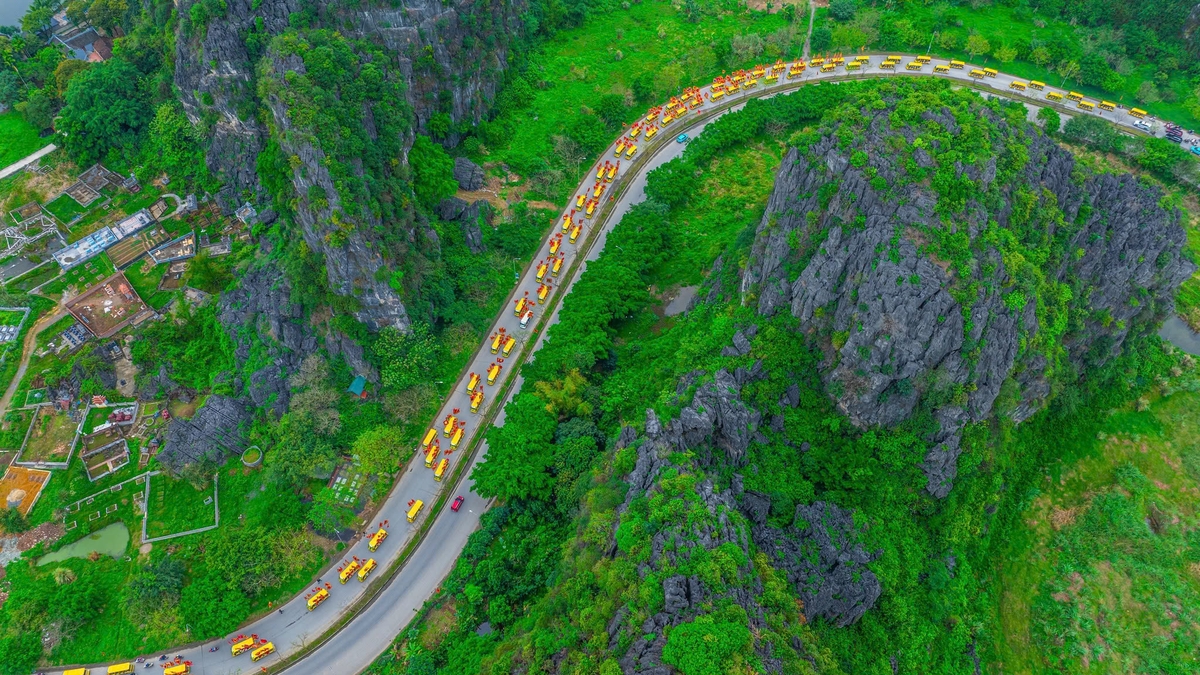
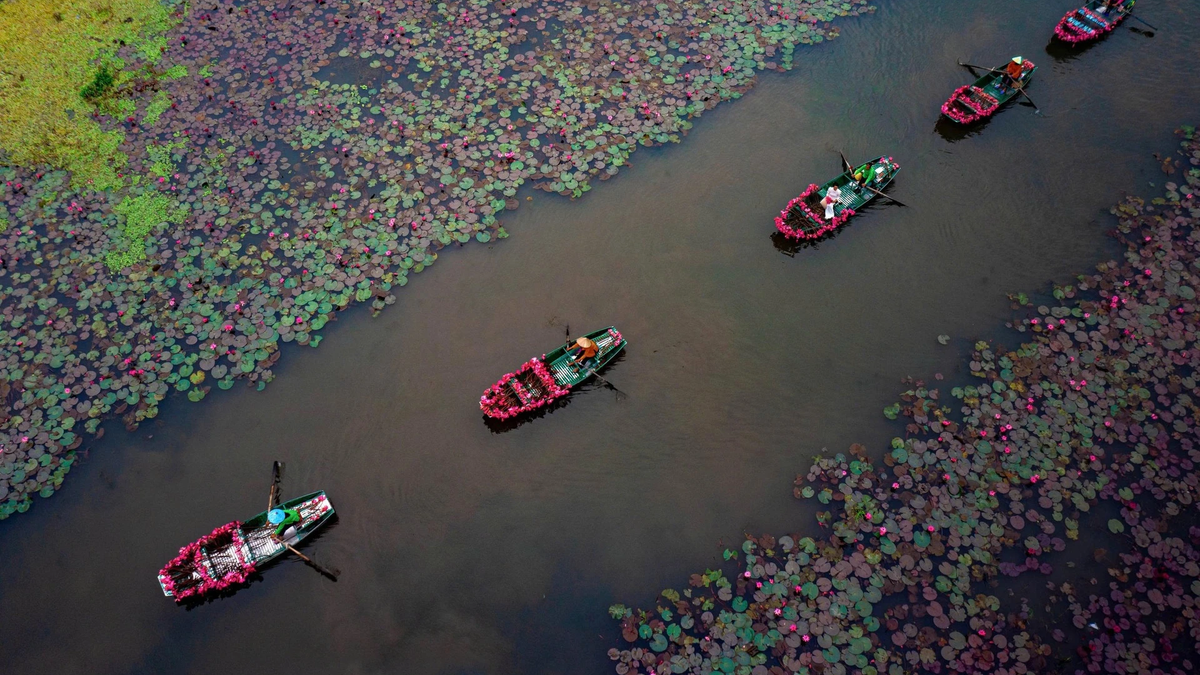





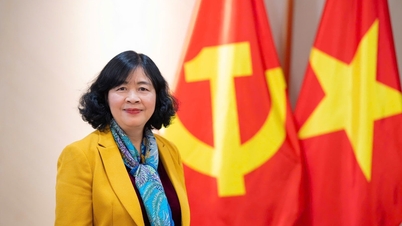
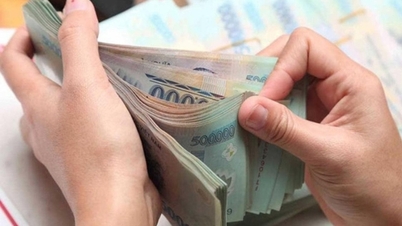
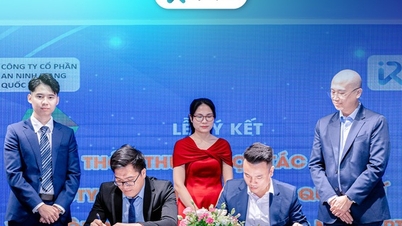

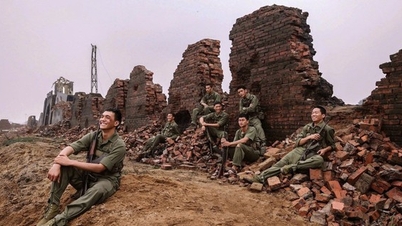


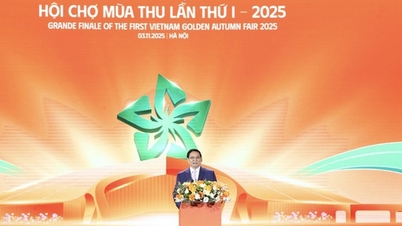
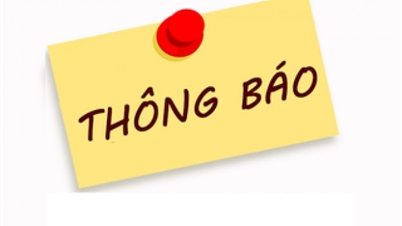

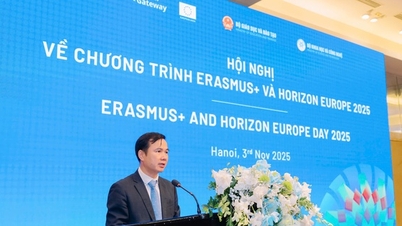




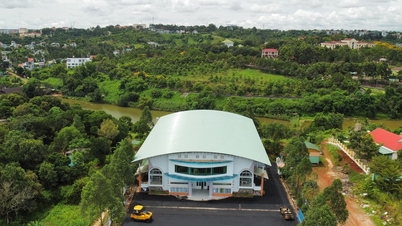
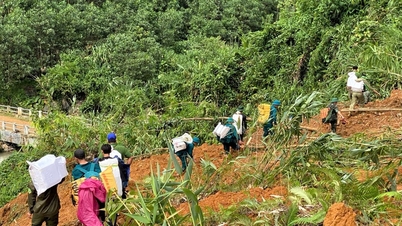
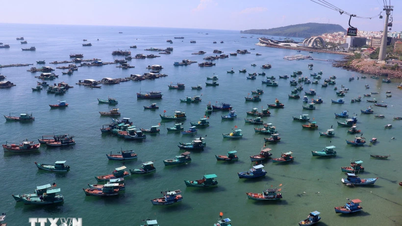

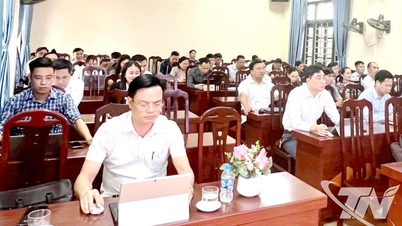



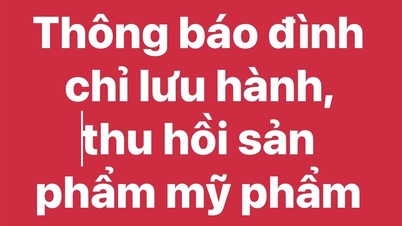

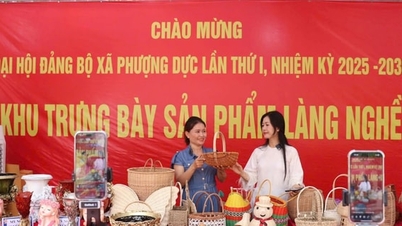
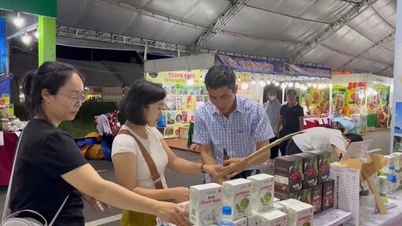

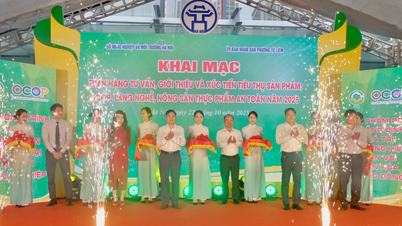

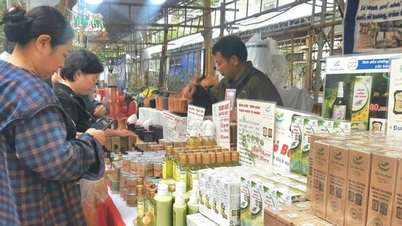



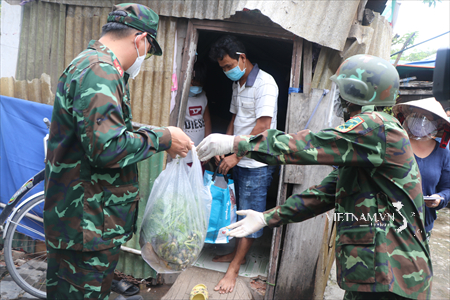

Comment (0)